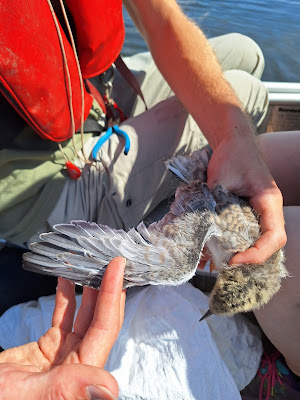The first half of 2025 has actually been rather quiet on the recoveries front, but there have been a few birds of interest to keep things ticking over.
One of the Attenborough Cormorants (CS6), ringed as a youngster in April 2024 has been seen regularly at Frampton Marsh in Lincolnshire, the latest report came on 2 January, but the bird was first seen onsite from July last year.
Continuing the Attenborough theme, a Grey Heron (HA), ringed at the reserve in the nest in June 2013 was noted at the reserve on 31 January. This appears to be the first time the bird has been reported since being ringed over a decade ago. Another Heron (HP), also an Attenborough bird, ringed in 2014 has been reported at Pleasley Pit just over the border in Derbyshire. The bird was noted on 29 April, just a few days shy of 11 years since it was ringed, and again was the first report received of this bird since fledging.
I was keeping my eye out for colour-ringed gulls again over the winter months, although it was fairly slim pickings. A Black-headed Gull made its third appearance for me at Trent Bridge on 10 January - White 7JJ. This bird had been ringed near Copenhagen in 2016 as an adult. At the back end of the year there was several near-misses with some colour-ringed BHG, but codes weren't fully read, but it was saved by a metal-ringed Danish bird that was seen at Colwick Park on 21 March. This bird had been ringed at Hirsholm in Denmark in 2020 as a nestling. The ring-reading was made easier by the fact that the code on Danish E-rings is printed vertically, which makes it much easier to get the full series.
One of the Swans ringed by members of the team at the end of January at Codnor Reservoir was found at the side of the road in May in nearby Ilkeston with a broken wing, and taken into care.
A Lesser Redpoll, ringed near Bestwood in 2021, was retrapped in Cropwell Bishop in February this year.
A Chiffchaff, ringed in Worthing, West Sussex in September 2023 was captured again at the new group site at Allestree Park in May.
And finally, a special mention for the juvenile Starling ringed at Gary & Holly's garden in the Meadows on 23 May, which hit a window after travelling to Keyworth, only 6 days later on the 29th.
Tom









.jpg)
.jpg)
.jpg)
.jpg)











